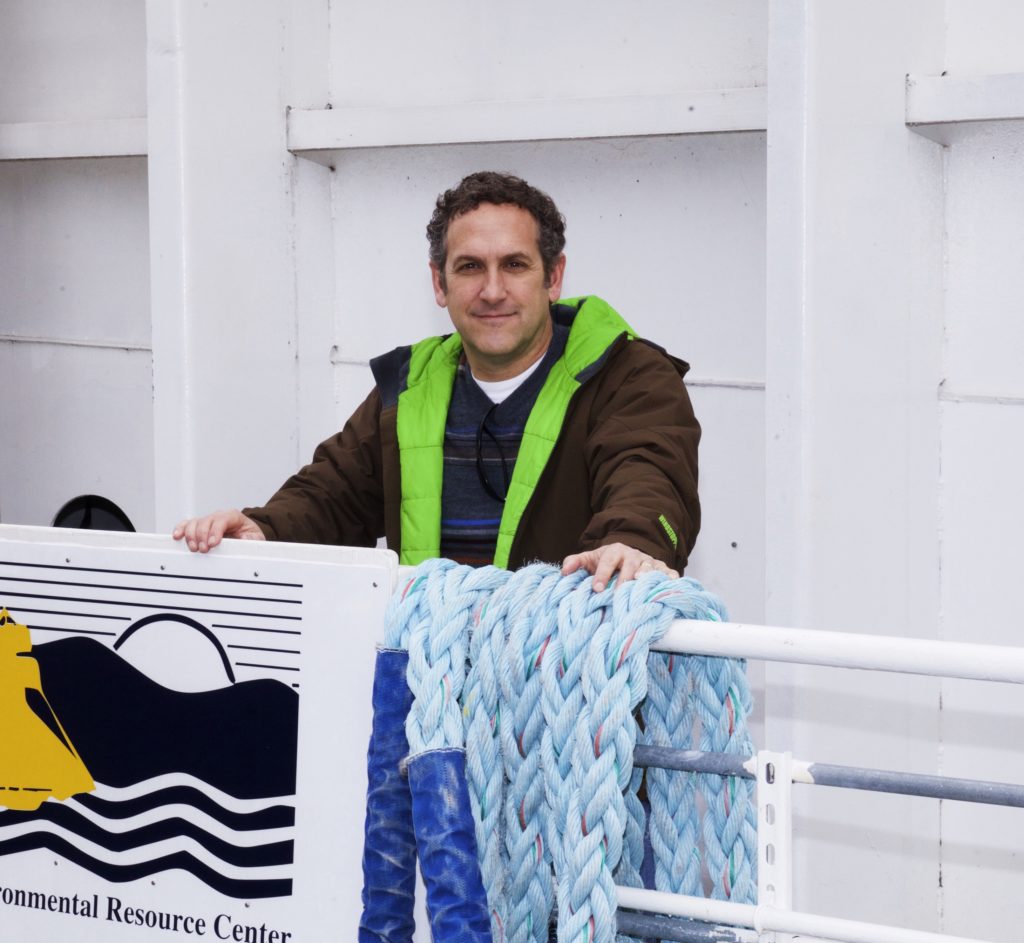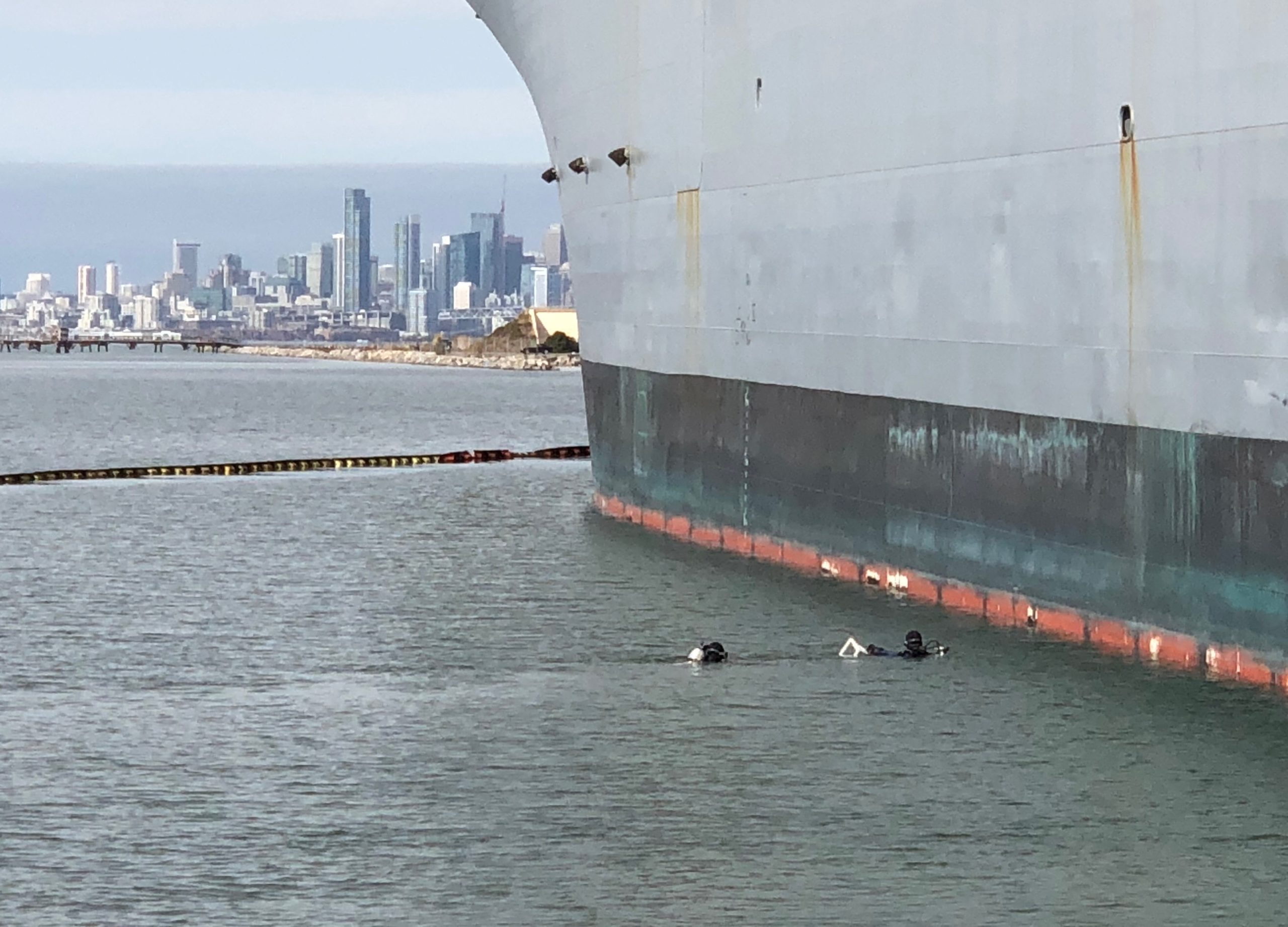Press Release: Dr. Mario Tamburri, Director of ACT/MERC, argues that a huge win-win for both commercial shipping and the environment can be achieved with a holistic approach to biofouling and better in water cleaning of vessels. That includes ‘getting proactive’ on one of our industry’s most pressing challenges.
Ask Professor Mario Tamburri a single question about vessel biofouling and you’ll get a 10-minute answer. This is a gentleman that is abundantly passionate about both his work and his subject theme.
Which is good, because both are very important.
Tamburri is the Director of the Maryland-based Alliance for Coastal Technologies (ACT) and its offshoot the Marine Environmental Resource Center (MERC); publicly funded partnerships dedicated to facilitating the development, testing, acceptance and adoption of technology that protects and serves the marine environment.
Tamburri and his team were on the frontline of the evolution and testing of ballast water treatment technology and its regulatory support, and have now shifted their crosshairs onto a new target.
Yes, you guessed it, the organisms that hitch a ride on vessel hulls worldwide. And how to get rid of them, safely.
Deadly invasion
“Ballast water is now more of a private sector issue, whereas our work is academic,” he explains. “We work with the science – developing and refining the protocols and methodologies that are needed for comprehensive, rigorous and feasible evaluations of technology. Through doing so we can help new innovations mature to the commercial stage, provide data to industry and end users, help with certification and approval, and assist in building the foundations for future regulations.
“With in-water cleaning of vessels, those are crucial steps forward.”
Although ballast water seemingly stole the limelight in the ‘invasive species show’ it’s actually biofouling that is the biggest driver of the spread of non-native flora and fauna from one place to another, often leading to catastrophic impacts on local ecosystems and commercial infrastructure and activity.
In fact, Tamburri says about 60% of aquatic invasive species are spread this way. That said, a historical study in New Zealand, one of the emerging regulatory frontrunners in biofouling, actually put the figure at around 70%.
Whichever number is closer to the mark, one thing is universally clear – this is a major environmental issue.
But it’s also a big business problem.
Supporting the industry

“This needs to be the focus in the biofouling debate,” Tamburri explains. “It’s not just the environment that benefits from clean hulls, but business too – as macrofouling increases frictional drag on hulls and that leads to increased fuel consumption, and exhaust emissions, with greater operational costs. So, in that respect this is an ‘easier sell’ than ballast water, because here there’s a clear ROI for owners.
“In short, everybody benefits from tackling this and that’s why the right technology and solutions are so essential. That’s where we can play a role.”
ACT/MERC is currently in the process of evaluating different approaches and technologies for in-water biofouling cleaning. In doing so it aims to support innovation, help shipowners make the right biofouling management decisions for their fleets, and feed into the development of regulations (which are still in their infancy – headed by the aforementioned New Zealand authorities, alongside California, Australia, and the IMO’s 2019 GloFouling Program and 2011 biofouling guidelines).
“With ballast water things were kind of back to front,” he notes, when talking about regulatory requirements. “The regulations were made and then the science and industry, to some extent, had to play catch up. Here we’re looking at the science first – what is possible, how to measure important variables etc – and then hopefully helping regulators create feasible and effective standards that can solve this issue, properly.”
Existing issues
At the moment there’s plenty of ways to attack the biofouling issue with in-water cleaning, but it’s the ‘properly’ word that demands attention.
In water cleaning with divers and/or scrubbing machinery can be effective in removing biofouling, but it has its drawbacks. These may include damage to the shipowner’s expensive anti-fouling coating (leading to increased fouling risks), the release of potentially harmful biocides from coatings (such as copper), health and safety issues with diver teams, and, crucially, the release of the macrofouling and coating biocides into the local waters where cleaning takes place.
“That really is an issue,” Tamburri says. “Rather than tackling the problem of invasive species, in-water cleaning without capture can actually facilitate it. As such, the biosecurity risks from the majority of existing in-water cleaning methods are simply unacceptable.”
With this in mind, the professor and his international partners are working to help the industry move away from cleaning without capture as the norm – creating a more responsible mindset, and the solutions, to safeguard the environment. Cleaning with capture is one response, but so too, interestingly, is proactive cleaning.
Proactive power
“This is a new development we’re seeing, and one we’d definitely encourage as part of a holistic approach to vessel biofouling,” he explains.
Before diving deeper into proactivity it’s worth establishing that marine biofouling goes through a four-stage growth process.
Stage one is the settlement of individual bacteria, which usually happens within minutes on a hull without sufficient protection. Stage two can follow within the course of a day, and is marked by the arrival of a biofilm or a slime layer. Stage three is the growth of algae and single cell organisms, within a week, and the final stage can be reached in around two to three weeks, as macro-fouling such as tubeworms or barnacles take root. The first three stages can be cleaned with minimal force (soft cleaning), while stage four demands more force, potentially damaging paint.
Proactive cleaning, as the name suggests, involves treating the issue before it becomes a problem (in other words, prevention rather than cure) and removing biofouling in either stage one or two. This safeguards the coating, ensures a smooth hull (and therefore optimal performance) and protects the environment from both unnecessary emissions and invasive species.
It’s clear why it’s an approach that demands encouragement, from all stakeholders.
Treating vessels holistically
“It’s very early days in terms of proactive solutions, but development is underway,” states Tamburri. “Proactive solutions probably won’t replace reactive ones completely – as, for example, if a vessel has had an extended lay-up period it might experience macrofouling growth and require in-water cleaning with capture – but they can form a very important part of an overall, holistic approach to optimal biofouling management and vessel performance. That will save businesses money (the IMO estimates the world fleet could achieve fuel savings of 10% with enhanced hull and propeller management) while safeguarding fragile natural environments.”
As clear a ‘win-win’ as you can get and, as Tamburri implies, a golden opportunity for the industry to harvest some low hanging fruit.
“With ballast water treatment it was seen by some as almost a tax on shipowners,” he concludes, “namely a cost, but no clear commercial benefit. Here owners are already cleaning hulls to reduce fuel expenditure, so there’s an established business case. If we can support and enable safe and effective in-water cleaning practices then we strengthen that, facilitating the means to increase fuel efficiency while decreasing pollutants and biosecurity risk.”
And that, I think we can all agree, is a cause it’s definitely worth getting passionate about.
For more information see: http://act-us.info
































